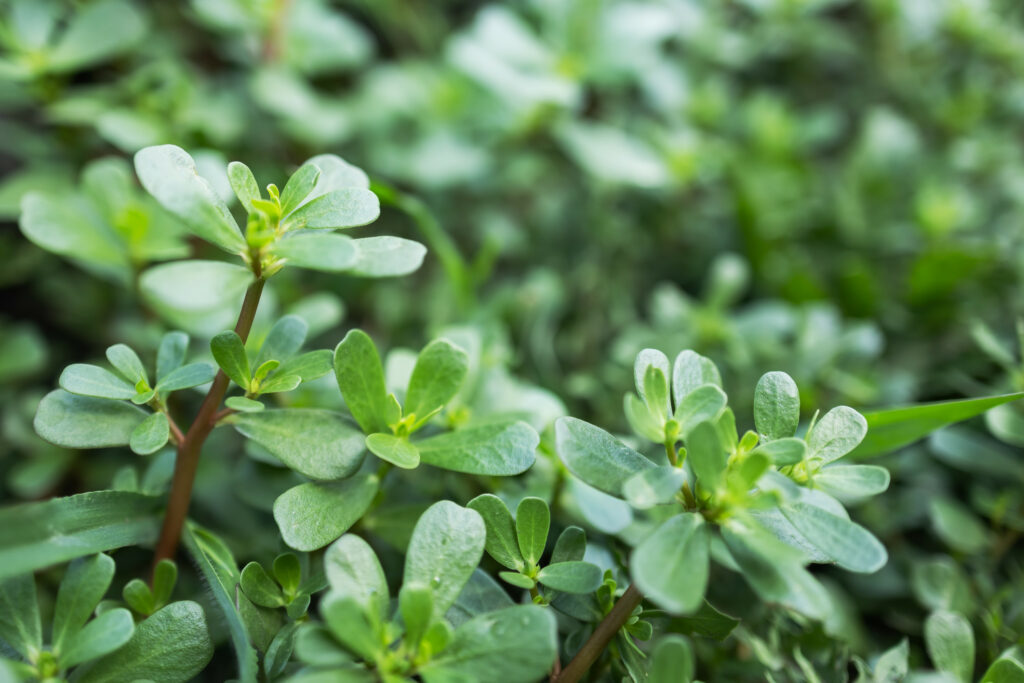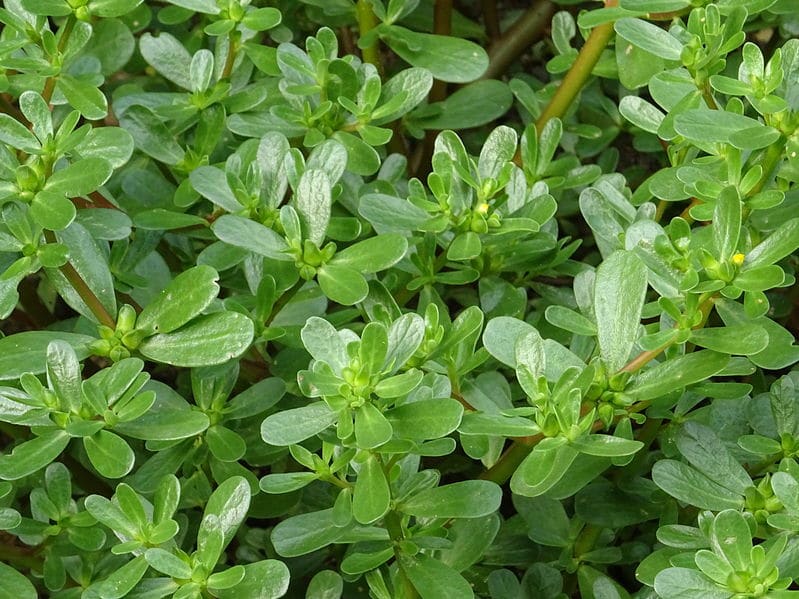Purslane (Portulaca oleracea) might look harmless with its fleshy leaves and yellow flowers, but this resilient weed can quickly take over your lawn and garden. Not to mention, it’s known for its drought tolerance and rapid spreading, purslane is challenging to control. But, not impossible. In this guide, we’ll cover what kills purslane, from natural remedies to professional treatments, so you can reclaim your yard.
How to Remove Purslane from the Lawn?
Hand-pulling small patches after rain ensures you remove the deep taproot. Additionally, selective herbicides containing 2,4-D or dicamba works best without harming grass. Furthermore, pre-emergents in early spring prevent seeds from sprouting.
What Can Be Mistaken for Purslane?
Common look-alikes include spurge (which has thinner leaves and milky sap) and prostrate knotweed (which has smaller leaves and wiry stems). Some edible succulents, like common purslane’s cultivated cousin, also resemble it but lack the invasive growth habit.
How to Identify Purslane Weed?
Purslane has thick, fleshy leaves (almost succulent-like) and smooth, reddish stems. It grows low to the ground in a spreading mat and produces small yellow flowers in summer. When broken, its stems release a clear sap (unlike spurge’s milky sap).
How to Tell the Difference Between Spurge and Purslane?
Spurge has thinner leaves, a milky white sap when broken, and often a more wiry stem. Purslane has juicy, rounded leaves, reddish stems, and clear sap. Moreover, spurge tends to grow more upright, while purslane spreads flat.
Does Vinegar Kill Purslane?
Yes, vinegar solutions (1 gallon vinegar + 1 cup salt + 1 tbsp soap) can kill purslane by drying out its leaves. However, it’s non-selective and will harm surrounding plants, so use it as a spot treatment only. For best results, apply on a sunny day.
What Controls Purslane?
Post-emergent herbicides (glyphosate for non-selective kill, 2,4-D for lawns) work on existing plants. Pre-emergent herbicides (like prodiamine) stop seeds from sprouting. Cultural controls (thick turf, proper mowing, and mulching) prevent regrowth.
Will Baking Soda Kill Purslane?
Baking soda can burn purslane leaves when sprinkled directly on the plant, but it won’t kill the deep roots. It’s a short-term fix best for small patches in sidewalks or driveways. For long-term control, combine it with other methods like hand-pulling.
Why Is Purslane So Hard to Kill?
Purslane thrives in poor, dry soil and can survive even when uprooted. Its key survival traits include:
✅ Deep taproot – Can regrow from fragments left in soil
✅ Drought-resistant leaves – Stores water to survive dry spells
✅ Prolific seeding – A single plant can produce thousands of seeds
If you’re unsure whether you’re dealing with purslane or another weed, check our Texas Lawn Weed Identification Guide for help.
How to Kill Purslane Naturally
1. Hand-Pulling (Best for Small Infestations)
-
Pull after rain (when soil is moist) to remove the entire root.
-
Dispose of plants in the trash (not compost—they can re-root!).
-
Repeat weekly to catch regrowth.
2. Smothering (For Garden Beds & Large Patches)
-
Cover purslane with cardboard or thick mulch for 4-6 weeks to block sunlight.
-
Works best in garden beds (not lawns).
3. Vinegar Weed Killer (Spot Treatment)
-
Mix 1 gallon white vinegar, 1 cup salt, and 1 tbsp dish soap.
-
Spray directly on leaves (avoid grass—it will kill everything).
Best Chemical Weed Killers for Purslane
For stubborn purslane, herbicides may be necessary. The most effective options include:
1. Post-Emergent Herbicides
-
Glyphosate (non-selective, kills everything—use carefully)
-
2,4-D + Dicamba (selective, safer for lawns)
-
Triclopyr (effective for purslane in ornamental beds)
Tip: Also, apply herbicides in early morning or evening when purslane is actively growing.
2. Pre-Emergent Herbicides (Prevent Future Growth)
-
Prodiamine or Pendimethalin (apply in early spring to stop seeds).
How to Prevent Purslane from Coming Back
-
Improve lawn density – Thick grass crowds out weeds.
-
Use proper fertilization – Weak lawns invite purslane. Get professional lawn fertilization to strengthen your turf.
-
Mulch garden beds – Blocks sunlight to weed seeds.
-
Mow high (3-4 inches) to shade out weeds.
Need Professional Purslane Removal?
Finally, if purslane keeps coming back despite your efforts, Ryno Lawn Care offers targeted weed control to eliminate tough weeds and keep your lawn healthy.


